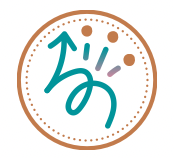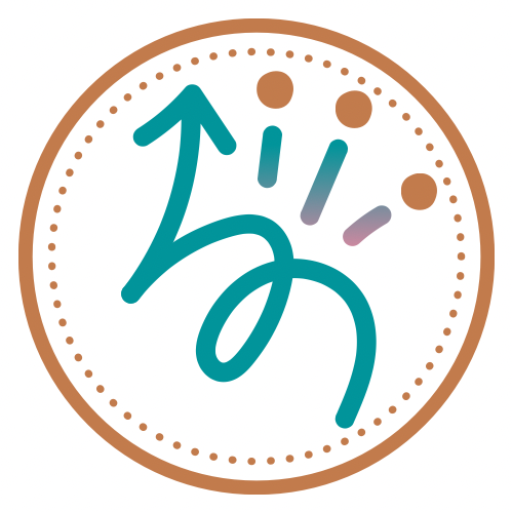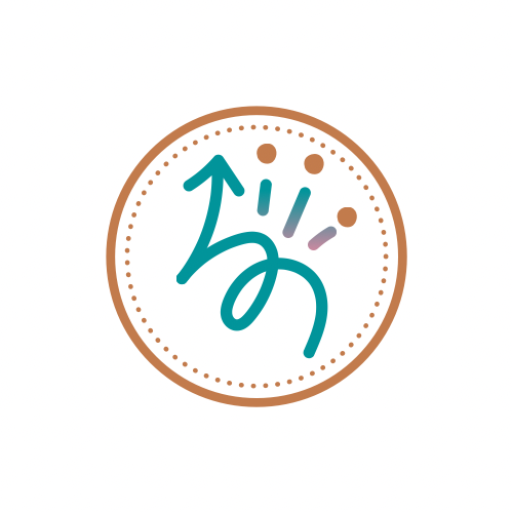DIY Universal Cuff: A Daily Living Grasping Aid
Universal cuffs help individuals with limited fine motor control and grip strength, maintain a hold on everyday utensils with ease. This type of daily living aid can be used with feeding utensils, combs and hairbrushes, toothbrushes, electric razors, and even wooden spoons when cooking. This is a quick tutorial, so let’s get started.

This content is not intended as a substitute for medical advice, diagnosis, or treatment. Always seek the advice of your physician, therapist, or other medical professional regarding a medical condition or treatment. This content is for informational purposes only. See full disclosure here.
All links in this post are non-affiliate links, and are provided for your convenience.
What Is A Universal Cuff?
A universal cuff, also known as a U-cuff, is a type of assistive technology used as a daily living aid that can help individuals maintain a grasp on a spoon, fork, paint brush, hairbrush, wooden spoon while stirring a pot of soup, tooth brush, or other handled device. This type of adaptive aid is typically comfortable to wear and are known for their ease of use. Its name refers to its universal use among a variety of utensils from feeding utensils to paintbrushes and cooking spoons.
Universal cuffs securely hold the utensil to the hand, preventing the utensil from slipping. Often U-cuffs can be found as either a one size fits all or as an adjustable cuff.
Universal cuffs purchased online are often made using a leather, nylon, or canvas often secured with Velcro, an adjustable strap, or even an elastic strap.
Who Might Benefit From Using A Universal Cuff?
This type of assistive technology may benefit those who experience differences in hand function including grip strength. Individuals of all ages including children and older adults can use a universal cuff *. Those who might benefit from using a U-cuff include:
- Limited fine motor control
- Finger range of motion limitations
- Difference in dexterity
- Weak grasp or grip strength
- Arthritis
- Cerebral palsy
- Multiple Sclerosis
- Spinal cord injuries
- Brain injury
- Limb differences
- Muscular dystrophy
- Tremors such as tremors associated with Parkinson’s Disease
- Hand injuries
- Stroke recovery

What Are The Benefits Of Using A Universal Cuff?
U-cuffs help individuals gain independence in daily living activities including self care tasks.
Here are some additional ways this handy little adaptive aid might provide assistance:
- Improved independence in self care tasks
- Decrease stress on the joints of the hand
- Improved comfort
- Decreased hand fatigue and/or pain
- Universal design
- Versatile
- Adjustable cuff
- Multipurpose
- Improved fine motor grasp control on utensils
- Light weight
- Ergonomic comfort
- Improved independent living
- Interchangeable between various utensils

What Types Of Utensils Can Be Used With A Universal Cuff?
A variety of utensils and other handled devices that can be used with this type of adaptive device include:
- Feeding utensils such as a spoon, fork, or butter knife
- Wooden spoon or spatula for cooking
- Writing utensils such as pen, pencil, crayon, or marker
- Paint brush
- Toothbrush
- Offset spoon or built up feeding utensils
- Styluses
- Electric razor, carefully of course, as cuts can happen. Adapt your shaving technique as needed to prevent any cuts or abrasions. Consult with your occupational therapist regarding an adapted shaving technique.
- Hairbrush or comb
- Adaptive feeding utensils
- A hose to water plants
- Remote control
- Musical instruments such as drumsticks or mallet
Additional Adaptive Equipment Tutorials:
The DIY Version Of The Universal Cuff
Today’s DIY U-cuff version features foam tubing placed at the palm of the hand to help increase comfort as well as provide a built up gripping surface. The foam tubing is optional though it is recommended for better comfort and positioning. You can purchase foam tubing online in various sizes and cut it to size. The additional foam tubing can be used with a variety of daily living handles to provide the user with a built up gripping surface. In addition, it can also be used to make long handled built up utensils as well. Foam tubing can also be found at your local hardware store.
The cuff also features an adjustable strap using a D-ring which can be found at your local crafting and hobby store in the sewing section.
Hand Sewing
When hand sewing the elastic strap together as well as sewing Velcro to the elastic, be especially careful. It is difficult to push the needle through the Velcro. Use a thimble or craft mat like I did to assist with pushing the needle through each time.
Match the color of the thread to the elastic. It will hide any stitches. I chose to use black thread so that readers can see my stitches. Of course, its not perfect as you can see, but like I said it is difficult to get the needle through. With the same color thread, no one will see any mistakes.
Glue Instead of Hand Sewing?
As of right now, I have not been able to find a glue that will not only hold the Velcro in place, but also adhere the elastic to itself. If you tried a glue that held well and withstands repeated use, please leave a comment below and let us all know. It will be greatly appreciated. Thank you!

Differences Between The No-Sew Scrunchie Version and Today’s Universal Cuff
The Scrunchie U-Cuff
The cuff featured on the left hand side in the picture above uses a scrunchie as a universal cuff. This type of universal cuff is used in place of your everyday cuff in case you are found without it. (ie: your handy everyday cuff is left at home). The scrunchie u-cuff can be stored in your car, purse, pocket, or where ever it is convenient in case you need it when your everyday u-cuff is left at home. Furthermore, it is not as stable and secure as the featured project today, but its nice to know how to make one if needed. In this tutorial, instructions for how to put on this type of u-cuff one handed is included.
Today’s Universal Cuff
Today’s version of the universal cuff is mostly made using duct tape, foam tubing and Velcro. This type of cuff is designed for everyday use, and it maintains the grasp on the utensil well and does not slip. It features an adjustable strap around the hand that is secured with industrial strength Velcro. If you use a different type of Velcro, you may have to replace it or secure the edges as they come loose with a strong adhesive. Today’s do-it-yourself version also features an adjustable, Velcro secured strap that attaches the utensil to the foam tubing. This feature was added so that you can place different handle widths in your cuff and secure them without slippage, easily.

Universal Cuff Care
With a damp cloth, spot clean any areas needing attention. If additional cleansing is needed, spray 50% white distilled vinegar with 50% water on to a washcloth and wipe clean.
If you purchased a universal cuff online or at a medical supply store, depending on the type you purchased, it may be washable. Some cuffs may be dishwasher safe while others may be washed in the washing machine. See manufacturer’s instructions.

Special Considerations
- Caution! Do not use plasticware with u-cuffs, only metal feeding utensils.
- The DIY universal cuff is not intended for children under the age of 3 years or for anyone who chews on non-food items due to choking hazards.
- Do NOT use u-cuffs with sharp or potentially dangerous objects such as knives or tools.
- Do NOT use the u-cuff for power tools.
- Replace Velcro as needed.
- Re-sew the elastic to itself as well as any of the Velcro if the stitching comes loose.
- Inspect the cuff frequently for any damage or wear and tear.
How To Make A Universal Cuff
Materials
- Duct tape
- Foam tubing, mine is 1 inch wide. The width is based on your needs, optional though recommended.
- Scissors
- Tweezers
- Velcro with self-adhesive backing, I used industrial strength
- Thread and needle
- Approximately 9 inch long elastic band, 1.5 inches wide (the length is based on the width of your foam tubing)
- Ruler or measuring tape








Instructions
- First, using duct tape, cut a piece 18 inches long. Overlap lap both sticky sides, lengthwise, so that it creates an approximate 1/2″ strip exposing only the non-sticky side of the tape.
- Second, using tweezers, place the opposite end of the duct tape through the center of the foam tubing, pull through from the other end of the tubing.
- Next, attach the D-ring to one end of the folded strip looping the strap through the D-ring along its straight edge. Use a 1/2 inch strip of duct tape to secure the D-ring in place.
- Using scissors, trim two pieces of Velcro to fit the 1/2 strap. Place the partially done u-cuff on your hand and make a mark where the Velcro pieces should be. Remove the cuff from your hand, and peel the backing to the Velcro and put in place. See pictures.
- Cut an approximate 9 inch long piece of elastic- the elastic length is based on the width of your foam tubing. Next, wrap one end of the elastic around your foam tubing snuggly for measurement, and make a mark on the elastic using a sharpie or other marker. See picture above for approximate markings.
- Next, make a loop based on your measurements and hand sew in place.
- To attach the Velcro, trim the Velcro to size to fit the elastic band and round the 4 corners of each piece to prevent scratches. Please note in the picture above with the elastic strip, that the Velcro pieces are two different sizes making this strap even more adjustable based on the width of the utensil being used. The fuzzy loop side of the Velcro is nearly double the size of the rough hook side of the Velcro. Remove the adhesive backing, and put in place. Before sewing, make sure the Velcro pieces are located in the correct places by putting the cuff on the users hand. See pictures in the above sections for locations of Velcro while in use. Hand sew the Velcro being careful not to sew both sides of the loop together. To push a needle through the Velcro either use a thimble to protect your finger or a mat (pictured) or something similar to help push the head of the needle through without hurting your finger. Secure with knots, and trim excess. Carefully complete this step. Ask for help if needed.
- Next, slip the elastic cuff over the duct tape strip and center it on the foam tubing. Reposition the elastic as needed for correct Velcro placement.
- Lastly, cut any excess off the duct tape and/or the elastic. If your elastic starts to fray at the end, hand or machine sew the cut end to secure. Replace or re-sew Velcro as needed. Frequently inspect your handy little cuff for wear and tear as well as for any damage.
Resources
Lastly, if you make this DIY universal cuff, leave a comment below. I’d love to hear how it went and how you are using this handy little device. Again, you if used an adhesive that worked well in place of sewing, please let me know in the comments below and Ill update this post. I appreciate your help! Thank you for joining me on this journey. I’m glad you are here.








